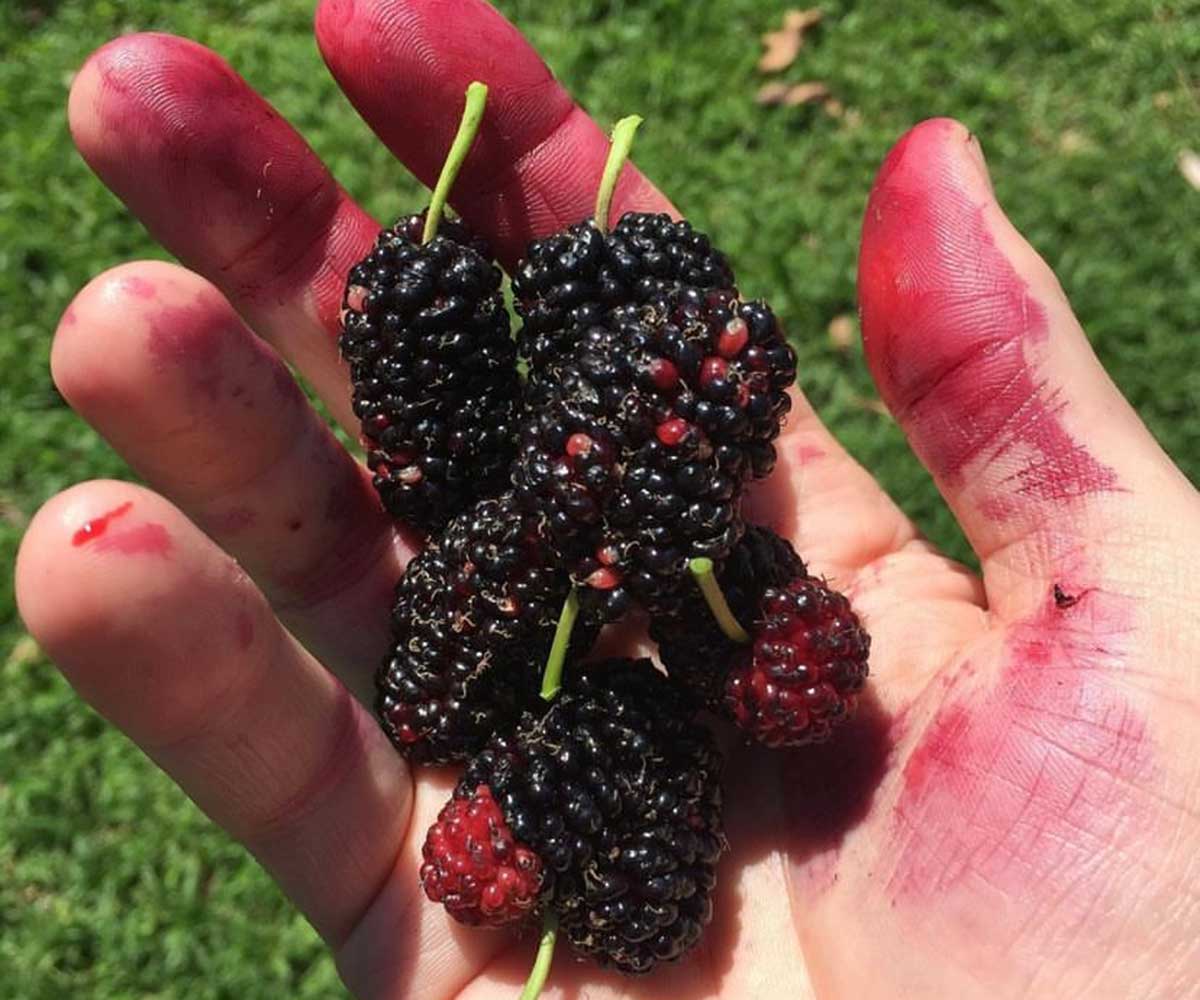
Those of you staying at Cromwell Farm House are lucky enough to have a mighty tree that will be laden with mulberries in late spring and summer.
Don’t be a fool, make one!
Ingredients
Method
Marvellous Mulberries…
Mulberries are fascinating, not just for their sweet, tangy flavour but for their rich history and surprising health benefits. These small, dark berries have been enjoyed for centuries and are found in different varieties worldwide, from white and red to black mulberries. Some interesting facts about these often-overlooked berries below…
Ancient Roots and Global Spread
Mulberries have been cultivated for thousands of years, originally native to China and parts of the Middle East. The Chinese have grown mulberries for over 4,000 years, mainly because they are essential for feeding silkworms, which thrive on mulberry leaves. The silk trade helped spread the trees to other parts of Asia, the Middle East, and eventually Europe. Today, mulberries are grown worldwide, particularly in warm climates (like Northern NSW!).
Silk and Mulberries
Speaking of silkworms, mulberries play a vital role in the production of silk. Silkworms exclusively feed on mulberry leaves, and without these trees, the silk industry as we know it wouldn’t exist. Mulberry trees are essential for silk production because silkworms fuel the silk-making process. Without mulberries, silkworms can’t produce the fine silk fibres used in textiles, making the trees a crucial component of the global silk industry. The connection between mulberries and silk is one reason why the mulberry tree has been so widely cultivated in many parts of the world.
Varieties
There are three main types of mulberries: white, red, and black. White mulberries (Morus alba) are native to China and tend to be sweeter, while red mulberries (Morus rubra) are native to North America and are more tart. Black mulberries (Morus nigra), that we have on the farm, originate from Western Asia and the Mediterranean, and they have a complex, rich flavour that’s a bit more tangy than sweet. Each variety has its own unique taste and texture, making them suitable for different culinary uses.
Health Benefits
Mulberries are a powerhouse of nutrients. They are loaded with vitamin C, vitamin K, iron, and fibre, making them a healthy addition to your diet. Mulberries are also rich in antioxidants, particularly resveratrol, which is believed to support heart health and help fight inflammation.
Culinary Uses
In addition to being eaten fresh, mulberries can be used in a variety of delicious dishes. You can find them in sweet pies, tarts, jams, jellies, or even in wine. Dried mulberries are often added to granola or used as a topping for yogurt. Their unique balance of sweetness and tartness makes them a versatile ingredient in both sweet and savoury recipes.
Fast-Growing Trees
Mulberry trees are known for their rapid growth. A young tree can start producing fruit as early as the second or third year after planting. They are also quite hardy and adaptable, growing in a variety of climates and soil conditions, which makes them a popular choice for gardeners and farmers.
